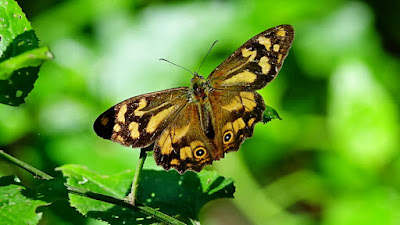The ‘brown’ butterfly family is a large one: probably over 2000 species worldwide but only 30+ species in Australia. There are about 15 species of ‘brown’ butterflies in Gippsland.
The larvae of the ‘browns’ feed almost exclusively on grasses and sometimes sedges. They are daytime flyers.
Many of the ‘brown’ family of butterflies look very similar and it takes a little bit of study of the wing patterns in order to identify them.
I don’t guarantee I have the following 100% correct – happy to receive any correspondence.
Banks Brown
A common butterfly in the open eucalypt forests of the Great Dividing Range. It prefers Slender Tussock Grass as its host plant and usually flies close to the ground, often resting on the fronds of tree ferns. Banks Browns are found from southern Queensland to central Victoria.
Forest Brown
The males particularly are erratic flyers, often in the crowns of trees in woodland and rainforest habitats. It is distributed down the eastern seaboard from northern New South Wales to the South Australia-Victoria border.
Meadow Argus
This butterfly is very widespread in a variety of habitats including some of the most arid parts of the continent. Its favourite host plant is any of the native Plantain herb species but is also known to utilize Goodenia, Scaevola and other species.
Painted Lady
Also fairly widespread across the continent except for the hottest parts of the Northern Territory and Western Australia, the Painted Lady has the extraordinary escape reflex from predators such as Robber Flies and birds: they fold their wings and plummet to the ground and remain catatonic for several minutes. Painted Ladies are a migratory species – they fly south-west from New South Wales in spring, often returning north in late summer.
Ringed Xenica
The Ringed Xenica is fairly distinctive and its under-wing is as striking as the upper-wing pattern.It is found down the eastern seaboard from southern Queensland to just into southern South Australia where it prefers moist habitats such shady gullies and rainforests. Weeping Grass and Grey Tussock Grass are two of its favourite host plants.





No comments:
Post a Comment